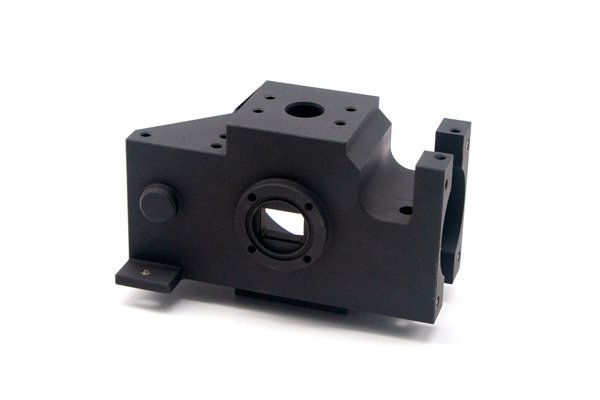Did you know that improperly machined threaded holes can lead to a staggering 20% increase in production costs, not to mention the potential for product failure and safety hazards? When it comes to precision manufacturing, ensuring that threaded holes are accurate and fit for their intended purpose is critical.
In the world of CNC (Computer Numerical Control) machining, the accuracy of threaded holes plays a vital role in the assembly and functioning of various mechanical components. From automotive parts to aerospace applications, the integrity of threaded holes can dictate the performance and longevity of a product. This comprehensive guide will delve deeply into how manufacturers can ensure the accuracy and fit of CNC threaded holes, exploring the techniques, tools, and best practices required for success.
The Importance of Accurate Threaded Holes
Threaded holes are essential for fastening components together, allowing for easy assembly and disassembly. Whether it is an engine block in a car or a high-precision component in a space shuttle, the reliability of these threads is paramount. An inaccurate threaded hole can lead to:
Given these potential pitfalls, ensuring the accuracy and fit of CNC threaded holes is not just a best practice; it’s essential for successful manufacturing.
Before delving into machining techniques, it’s crucial to understand the various thread standards and specifications. Familiarizing yourself with standards such as ANSI, ISO, and JIS is the first step in ensuring that threaded holes are produced with precision.
1.1 Popular Thread Standards
Familiarity with these standards aids in selecting the appropriate tooling and setting up the machining process.
To achieve precision in CNC machining, selecting the appropriate tools and equipment is essential. Here’s how to make informed decisions:
2.1 CNC Machines and Capabilities
The type of CNC machine plays a significant role in the quality of threaded holes. Key points to consider include:
2.2 Cutting Tools
Selecting the correct cutting tools is also critical. Options include:
Investing in high-quality tools goes a long way in reducing defects in threaded holes.
Correctly configuring CNC machining parameters is where precision is genuinely established. This encompasses various aspects, such as:
3.1 Feed Rate
Choosing the right feed rate affects thread accuracy. A slower feed rate allows for better control, reducing errors during threading operations.
3.2 Depth of Cut
Setting the correct depth of cut per pass ensures that the tool does not overload, leading to inaccuracies. Gradual increases in depth can help maintain precision.
3.3 Tool Path Optimization

Optimizing the tool path minimizes unnecessary movements and vibrations which can affect thread quality.
3.4 Coolant and Lubrication
Incorporating coolant during machining reduces friction and heat, which can distort threaded features. Choosing the correct coolant type can provide improved surface finish and tool longevity.
In any manufacturing environment, inspection plays a critical role in maintaining quality. Implementing a robust quality control process involves:
4.1 Measuring Tools
Using appropriate measuring tools ensures that threaded holes meet specified tolerances. Tools such as micrometers, calipers, and specialized thread gauges should be utilized to confirm measurements.
4.2 First Article Inspection (FAI)
Conducting an FAI at the beginning of a production run can catch setup or tooling issues early. This proactive approach allows manufacturers to adjust parameters before producing a larger batch.
4.3 Process Control Charts
Using statistical process control techniques helps monitor machining processes for deviations, ensuring adjustments can be made as required.
Ensuring that the workforce is trained and knowledgeable about CNC operations is critical. The more skilled the operators, the lesser the chances of human error impacting threaded hole accuracy.
5.1 Continuous Training Programs
Organizations should implement ongoing training for CNC operators focused on:
5.2 Feedback Loop
Creating a feedback loop where operators can share insights on machining issues fosters a culture of continuous improvement.
As technology advances, new methods emerge to enhance machining precision. Innovations such as:
6.1 CAD/CAM Software
Using software for computer-aided design (CAD) and computer-aided manufacturing (CAM) allows for simulated machining operations. This preemptive checking can identify potential issues before they occur in real-time machining.
6.2 3D Printing and Additive Manufacturing
While not a traditional machining technique, 3D printing can create prototypes with threaded holes, allowing for testing and validation before mass production.
6.3 IoT Integration
Integrating Internet of Things (IoT) devices provides real-time data on machining processes, allowing for immediate corrections and fidelity checks on threaded holes.
In conclusion, maintaining the accuracy and fit of CNC threaded holes is a multifaceted approach that encompasses understanding thread standards, selecting the right tools and equipment, optimizing machining parameters, implementing quality control measures, and training the workforce.
By adopting these practices, manufacturers can significantly reduce the risk of production errors, improve the quality of their products, and ultimately enhance their bottom line. Understanding and focusing on these techniques not only adds value to the manufacturing process but also ensures that products are fit for purpose and engineered to last.
As automation and technology continue to evolve, staying informed about new methods and advancements remains essential for establishing and maintaining high standards in manufacturing. Think of this guide as a cornerstone for success in CNC machining threaded holes—one that merits serious consideration as you advance in the world of precision manufacturing.






